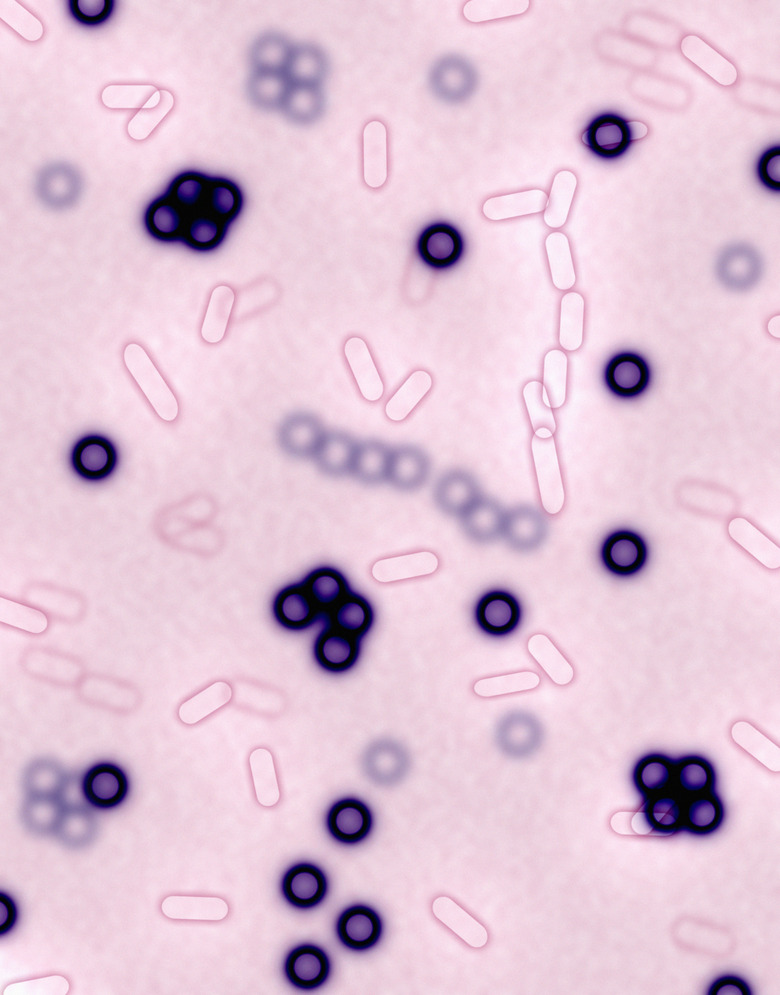What Is The Use Of Genetic Engineering To Transfer Human Genes Into Bacteria?
Transferring a human gene into bacteria is a useful way of making more of that gene's protein product. It is also a way of creating mutant forms of a human gene that can be reintroduced into human cells. Inserting human DNA into bacteria is also a way of storing the entire human genome in a frozen "library" for later access.
Production of Medicine
Production of Medicine
A gene contains information to make a protein. Some proteins are life-sustaining molecules in humans. By inserting a human gene into a bacterium, scientists can produce large amounts of the protein that is encoded by the gene. The production of insulin is a perfect example. Some diabetes patients need insulin injections in order to survive. Human insulin is produced through the use of bacteria.
It’s Cold in This Library
It's Cold in This Library
Bacteria contain small circular pieces of DNA called plasmids. Plasmids have regions that can be cut such that a human gene can be inserted into the plasmid. The entire human genome — all the genes in a human — can be cut into small pieces. These pieces can be inserted into plasmids that are then inserted into bacteria. Each bacterial cell contains one piece of human DNA and can be grown into a colony of many bacteria that contain the same piece of DNA. In this way the human genome can be stored in a freezer that is like a library. Instead of books, the freezer contains vials of bacteria; each vial contains a piece of the human genome.
Creating Mutants
Creating Mutants
Another advantage of inserting a human gene into a bacterium is that you can mutate that gene at any location within its sequence. You can even cut out chunks of the gene. These mutations do not hurt the bacteria, which produces the protein from the mutated gene as it would do for any other gene in the plasmid. This method allows scientists to isolate a human gene, insert it into a plasmid, mutate the gene in the plasmid, place the mutated gene into bacteria, grow the bacterial population, then get more copies of the mutated gene from the bacterial population. The resulting large pool of plasmids containing the mutated gene can then be put back into human cells. This is a way to study the effect of an artificially mutated human gene in normal human cells.
Glow-in-the-Dark Protein
Glow-in-the-Dark Protein
Scientists often fuse extra protein parts to human genes when they insert the human gene into bacteria. The plasmid that carries the human gene can already be engineered to have a gene that makes green fluorescent protein (GFP). The GFP protein glows neon green when exposed to ultraviolet light. Inserting a human gene into a plasmid allows the scientist to fuse the human gene to GFP. When the scientist extracts the plasmids that contain this fusion gene from a batch of bacteria that have this plasmid, the scientist can then place these fusion genes into human cells. In this way the scientist can track the movement of the human protein that is fused to GFP as it moves about in the cell.
Cite This Article
MLA
Ph.D., David H. Nguyen,. "What Is The Use Of Genetic Engineering To Transfer Human Genes Into Bacteria?" sciencing.com, https://www.sciencing.com/what-is-the-use-of-genetic-engineering-to-transfer-human-genes-into-bacteria-12731219/. 15 January 2014.
APA
Ph.D., David H. Nguyen,. (2014, January 15). What Is The Use Of Genetic Engineering To Transfer Human Genes Into Bacteria?. sciencing.com. Retrieved from https://www.sciencing.com/what-is-the-use-of-genetic-engineering-to-transfer-human-genes-into-bacteria-12731219/
Chicago
Ph.D., David H. Nguyen,. What Is The Use Of Genetic Engineering To Transfer Human Genes Into Bacteria? last modified August 30, 2022. https://www.sciencing.com/what-is-the-use-of-genetic-engineering-to-transfer-human-genes-into-bacteria-12731219/
